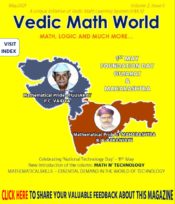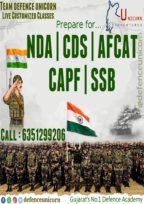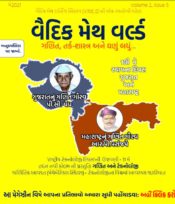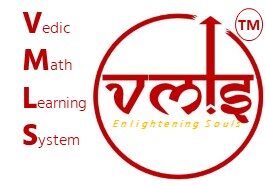The Great Indian Mathematicians
Know about Indian Brains!
(May2021)
P.C. VAIDYA & EINSTEIN FIELD EQUATIONS




P.C. VAIDYA & EINSTEIN FIELD EQUATIONS
Published in May2021 issue of ‘VEDIC MATH WORLD’ – magazine
INTRODUCTION:
Prahalad Chunnilal Vaidya was a Gujarati PHYSICIST AND MATHEMATICIAN, whose work on general relativity is equally comparable to its innovator Albert Einstein. P C Vaidya researched a lot into the general theory of relativity. He was best known as the founder of Community Science Centre. Apart from his scientific career, he was also an educationist, freedom fighter, and a follower of Gandhian philosophy in post-independence India, in Gujarat.
Birth Anniversary : 23rd May, 1918
Birth Place : Junagadh (Gujarat)
Death Anniversary : 12th March, 2010
Famous Works : Vaidya Metric | Vaidya–Patel solution | Einstein field equations
EDUCATION & CAREER:
He was Born on 23 May 1918. 2021 year marks his 103rd birth anniversary. P. C. Vaidya was born in a village called Shahpur of Junagadh district, Gujarat, India. In 1931, his father passed away when he was in 9th standard only. He finished his most of his schooling in Bhavnagar and went to Mumbai for higher studies. There, after he completed his high school at Ismail Yusuf College, he joined the Institute of Science in Mumbai. From starting He had shown a special aptitude for being a mathematician. He completed his B.Sc. (Mathematics) with Physics. He also completed his MSc degree in applied mathematics.
After accomplished M.sc Examinations. In 1940 he started as a lecturer at Dharmendra Singhji college in Rajkot. There he used to teach arithmetic and trigonometry to undergraduate students. He was a faithful believer of Ahinsa, honesty, and simplicity. he plays part in the freedom movement, but in a different way. In 1941 he resigned from lectureship and founded Ahinsak Vyayam Sangh institute of physical education for training youths for non-violent struggle with freedom fighter Prithvi Singh Azad. . He was the Principal of AVS. At that time too, he continued teaching mathematics by conducting private tuition for school students.
In 1942, P. C. Vaidya wrote a letter to Professor Vishnu Vasudev Narlikar, father of Indian physicist Jayant Narlikar, expressing his aspiration to study relativity. Narlikar approved this, and Vaidya immediately shifted to Banaras Hindu University(BHU), Varanasi, where Narlikar was a faculty member at the school of relativity. He spent around 10 months at Banaras. in 1949 Professor Vaidya obtained his Doctoral degree (PhD) in mathematics.
VAIDYA METRIC & EINSTEIN FIELD EQUATIONS
In the year 1942, Vaidya went to Banaras Hindu University he researched Albert Einstein’s theory of gravity equations which is described by a set of equations that use the mathematics of Riemannian geometry.
P.C. Vaidya took up solution inventing work which led to the conception of such a solution that is known as the Vaidya metric. the revolutionary idea of developing a spacetime geometry was delivered by him, which would describe the gravitational potentials in the exterior of a radiating star. This is may be used to model astrophysical stars. Vaidya metric narrates the non-empty external spacetime of a nonrotating star which is spherically symmetric and either emitting or absorbing null dust. Vaidya is known to be one of the forerunners of the Golden age of general relativity. There was inventing work done around the same area, but it was helpful up to some extent. The distinguished Schwarzschild Solution describes the geometry around a spherical star. However, it is necessarily accepting the exterior of the star to be empty. Vaidya generalized this case to incorporate the radiation from the star, and the resulting solution was the famous Vaidya metric. His discovery of the Vaidya Metric gave him a Globally recognition at the age of 24, even before the beginning of his professional career.
CONTRIBUTION IN MATHEMATICS:
P.C Vaidya became a professor at Gujarat college in the year of 1955. Within three years, he appointed as principal of M. N. College, Visnagar by the Director of Education. After a year he associates with the newly set up department of Mathematics at Gujarat University. Because of his great leadership quality, he got the position of Vice-Chancellor. His primary attention was always on mathematics education. Gujarat Ganit Mandal, the Mathematical Society of Gujarat was commenced by Vaidya in 1963. The first conference of the most dynamic mathematical society of India was held in Bhavnagar in 1960. In 1963, Vikram Sarabhai met Vaidya to discuss how they can make Mathematics and Science more popular; this meeting leads the way to the establishment of the Community Science Centre in Ahmedabad. Between 1964 and 1973, he served as a Visiting Professor of Mathematics at Washington State University, USA; London University, York University, and Newcastle University in the UK. He also addressed the 6th International Conference on General Relativity and Gravitation at Copenhagen. During the later stages of his life, Shri. Vaidya had confined himself to his Ahmedabad house due to poor health. He passed away on 12 March 2010. With this background understanding of Vaidya to create awareness among the new generation of science enthusiasts, the bibliometric study was undertaken. Major contributions Vaidya has done in the literature of physics and mathematics. Apart from all these, he has a numerus publication on his various works. Further details about his publications are mentioned below.
VARIOUS BOOKS/MAGAZINE PUBLICATION OF SHRI P. C. VAIDYA:
‘suganitam’ – a mathamematics magazine
Various articles in ‘kumar’ gujarti cultural magazine
Various popular science books majority in Gujarati language
‘Ganit Darshan’ – English translation: Discourses in Mathematics
‘Dashansh Paddhati Sha Mate?’ – English translation: Why Decimal System?
‘Dadaji Ni Vato’ – English translation: Grandpa’s Tales
‘Akhil Brahamandman’ – English translation: In the Entire Universe
‘What is Modern Mathematics?’ – It was in English language, originally.
